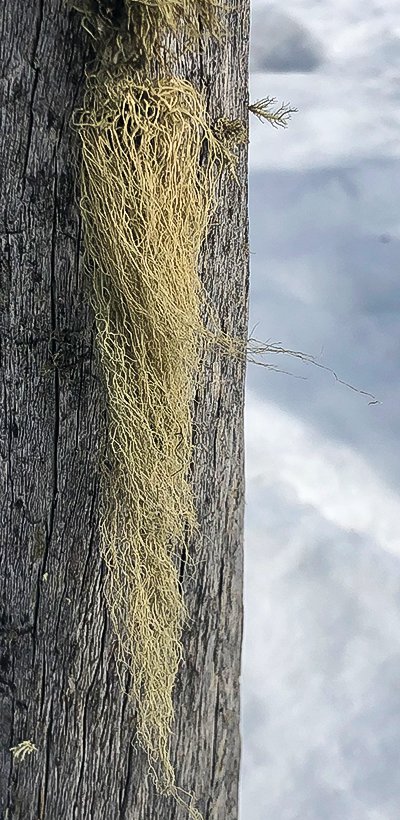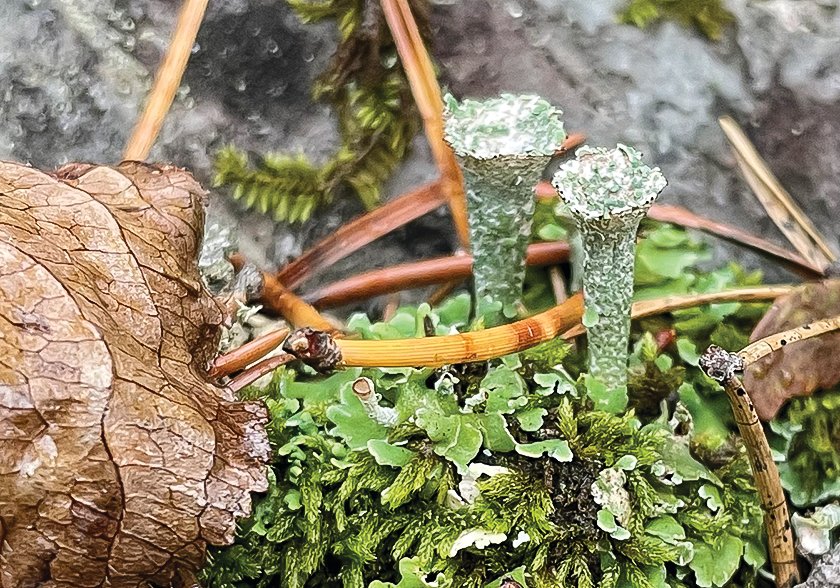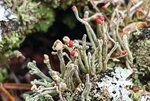Support the Timberjay by making a donation.
A Lilliputian world
In our season of gray, take a closer look at lichens
That brief period between the fall of our leaves and the coming snow, is a good time to pay attention to another colorful and fascinating part of the North Country environment— …
This item is available in full to subscribers.
Attention subscribers
To continue reading, you will need to either log in to your subscriber account, or purchase a new subscription.
If you are a current print subscriber, you can set up a free website account and connect your subscription to it by clicking here.
If you are a digital subscriber with an active, online-only subscription then you already have an account here. Just reset your password if you've not yet logged in to your account on this new site.
Otherwise, click here to view your options for subscribing.
Please log in to continue |
A Lilliputian world
In our season of gray, take a closer look at lichens
That brief period between the fall of our leaves and the coming snow, is a good time to pay attention to another colorful and fascinating part of the North Country environment— lichens.
It’s easy to overlook these ubiquitous organisms the rest of the year, because they are, well, everywhere here. They grow on bare rocks, the sides of trees, gravestones, rotting logs, old cars, even on the roofs of our houses.
We can thank our excellent air quality for that. Lichens are unique organisms that absorb all they need to survive from the air. That means they have a tough time surviving in urban areas, where the air includes pollution from industry or vehicles.
Lichens can be found in many, often bright, colors, so they stand out in our typically gray late October forests. And they are often at their brightest this time of year, because the cool and damp air help keep them from becoming dormant, as they do in dry weather.
It’s easy to mistake a lichen for a plant, but they are entirely unrelated to plants. Lichens are the physical manifestation of a symbiotic relationship between a fungus and an algae or cyanobacteria, and none of those constituent parts is classified within the plant kingdom on the phylogenetic tree.
Most of what we see of a lichen is comprised of the fungal partner, which provides a kind of case that protects the other part of the lichen, which is comprised of cellular layers of green algae or cyanobacteria, which we used to call blue-green algae even though they are, in reality, bacteria.
Green algae, just so you know are classified as protists, not plants. And cyanobacteria are classified as bacteria even though they also contain chlorophyll. I know, life on this planet is both amazing and weird.
The partnership between these various organisms allows them to survive conditions that neither could survive on their own. The fungal partner provides protection from the elements, be it intense heat, frigid cold or intense dryness, while the algae or bacterial partner provides food for the combined organism, mostly through photosynthesis. The cyanobacteria can also fix nitrogen from the air, providing an additional critical nutrient.
The appearance and shapes of lichens are largely dependent on the fungal partner, and this is where things really get interesting. Lichens are generally lumped into three groups based on shape, including crustose, foliose, and fruticose. The crustose lichens are exactly what you might expect, comprised of those multi-color lichen crusts that grow on rock surfaces almost everywhere here. Foliose lichens have a more leafy quality, and often have distinctive lobes or ripples. The fruticose lichens come in any manner of shapes and sizes. The whitish clumps of “reindeer moss” that grow on our open rock outcrops is not a moss at all, but a variety of lichen known as Cladonia rangiferina. It’s found throughout our region and all the way up to the tundra and it is a primary food source of caribou, hence its common name.
The fruticose lichens also include varieties like old man’s beard, (genus Usnea), which drapes like a grayish-green beard, most often from the branches of trees. They like damp air, so you’ll most often find this lichen growing along lakeshores or in swamps in our region.
Then there are varieties of the genus Cladonia, like the pixie cups or British soldiers, which form truly bizarre structures. The pixie cups, as the name suggests, look like tiny, grayish-green goblets, often laid out in rows, as if waiting for their Lilliputian party to get started. The British soldiers can form any shape imaginable but are always capped with a top knot of scarlet, like the red coats formerly worn by the British Army. And just like soldiers, they often grow in formation.
I’ve often felt guilty while walking across a rock outcrop in dry weather and having to step on countless lichens, particularly the fine branches of the reindeer lichens. It takes only a few hours of sunny weather for the lichens to dry out to the point of being crunchy, so you can destroy years of lichen growth with a single step.
Yet, each of those pieces of broken lichen can form a new lichen, and this is often how they reproduce. As you might imagine, traditional reproduction can be a bit complicated for an organism that is, in reality, a collection of different organisms, so reproducing through the dispersal of broken chunks of the parent lichen is certainly the approach most likely to succeed.
The fungal partner can also reproduce through spores, but each fungus that arises from a spore must find an algal or bacterial partner in order to become and survive as a lichen. I can’t imagine what the odds of success in that endeavor might be. If only they had social media.
So, while we’re all waiting for the white stuff to arrive, it’s a good time to explore the unusual and colorful world of lichens, found all around us here in the North Country.













